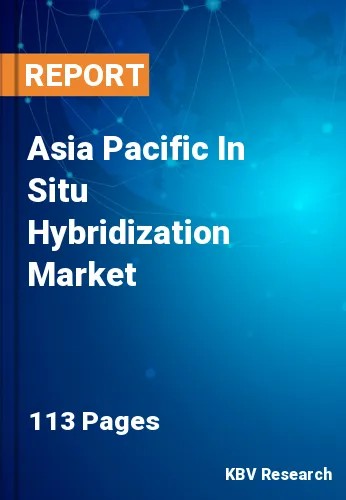The Asia Pacific In Situ Hybridization Market would witness market growth of 7.8% CAGR during the forecast period (2022-2028).
Technology developments in the IVD sector are the main drivers of the in situ hybridization (ISH) market. One of the primary technological developments that have led to prosperous business potential is the development of 3D FISH technology. It makes it easier to see and analyze target cells from a 3D perspective, leading to the best study results.
Therefore, numerous strategic efforts are being undertaken by different businesses to combine their resources for technological growth. Additionally, research based on the use of FISH technology for identifying chromosome modifications in pathology archives concluded that FISH images are among the best alternatives for validating SNP microarray analysis because they are reliable in identifying abnormalities like uniparental disomy.
Additionally, it is a completely automated approach for detecting prenatal cancer that reduces the time needed for diagnostic and research applications by providing quicker and more reliable findings. Major In Situ Hybridization (ISH) market companies and independent research communities are expected to invest in various research projects due to the aforementioned considerations.
In comparison to other places, the development of illnesses like chronic lymphocytic leukaemia (CLL) is quick in this one. Particularly, Southeast Asian countries are seeing a sharp rise in the frequency of lymphoma in the area. Additionally, Australia and its adjacent nations have the highest age-standardized rates of multiple myeloma (MM) in the whole globe. Blood cancer affects 60,000 Australians, on average. Hematologic malignancies are becoming more common in other countries as well. For instance, leukaemia is now China's tenth most prevalent cancer-related cause of death. The ISH market is expected to have considerable growth in the APAC region due to the growing incidence of cancer.
The China market dominated the Asia Pacific In Situ Hybridization Market by Country in 2021, and would continue to be a dominant market till 2028; thereby, achieving a market value of $121.7 million by 2028.The Japan market is estimated to grow a CAGR of 7.2% during (2022 - 2028). Additionally, The India market would experience a CAGR of 8.5% during (2022 - 2028).
Based on Technology, the market is segmented into Fluorescent In Situ Hybridization (FISH) and Chromogenic In Situ Hybridization (CISH). Based on End Use, the market is segmented into Research & Diagnostic Laboratories, Academic Institutes, CROs and Others. Based on Application, the market is segmented into Cancer, Cytogenetics, Developmental Biology, Infectious Diseases and Others. Based on Product, the market is segmented into Instruments, Kits & Probes, Software and Services. Based on Probe, the market is segmented into DNA and RNA. Based on countries, the market is segmented into China, Japan, India, South Korea, Singapore, Malaysia, and Rest of Asia Pacific.
Free Valuable Insights: The Worldwide In Situ Hybridization Market is Projected to reach USD 1.8 Billion by 2028, at a CAGR of 6.9%
The market research report covers the analysis of key stake holders of the market. Key companies profiled in the report include Thermo Fisher Scientific, Inc., Abbott Laboratories, PerkinElmer, Inc., Agilent Technologies, Inc., Merck Group, Bio-Rad Laboratories, Inc., Bio-Techne Corporation (Advanced Cell Diagnostics, Inc.), Danaher Corporation (Leica Biosystems), F. Hoffmann-La Roche Ltd., and Neogenomics, Inc.
By Technology
By End Use
By Application
By Product
By Probe
By Country
Our team of dedicated experts can provide you with attractive expansion opportunities for your business.

